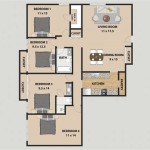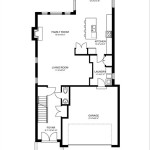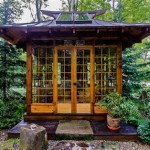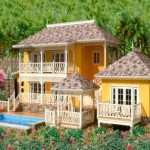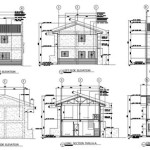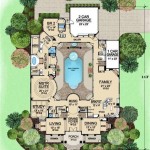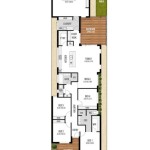Granny Unit House Plans: Designing for Multigenerational Living
The concept of "granny units" has become increasingly popular in recent years as families seek ways to accommodate multiple generations under one roof. These units, also known as accessory dwelling units (ADUs), are self-contained living spaces integrated into existing properties or built as separate structures on the same lot. Granny unit house plans offer a versatile solution for multigenerational families, providing privacy, independence, and convenience for all involved.
Advantages of Granny Units
Granny units offer numerous advantages for families, including:
- Financial Benefits: A granny unit can offer a source of income through rental or by providing a space for a family member to contribute to household expenses.
- Caregiving Support: It provides a safe and comfortable environment for elderly parents or relatives requiring assistance with daily living, allowing for close proximity while maintaining independence.
- Increased Family Connection: Living closer together can foster stronger family bonds and create opportunities for shared experiences and support.
- Enhanced Property Value: Adding a granny unit can increase the overall value of a property, making it more attractive to potential buyers.
Types of Granny Unit House Plans
Granny unit house plans come in various configurations to suit different needs and preferences:
1. Attached Granny Units:
Attached granny units are built onto the existing home, sharing a common wall. These units are often smaller than detached units and can be designed to blend seamlessly with the main house.
2. Detached Granny Units:
Detached granny units are separate structures on the same property, providing greater privacy and independence. They can range in size from small studios to larger units with multiple bedrooms and bathrooms.
3. Above-Garage Units:
Converting attic space or building above a garage can be a cost-effective way to create a granny unit. This option offers privacy while still being close to the main house.
Designing a Granny Unit House Plan
When designing a granny unit, it's important to consider the following factors:
1. Size and Layout:
Determine the desired size and layout based on the intended occupancy and lifestyle of the residents. Include essential features like bedrooms, bathrooms, kitchens, and living areas to ensure comfort and functionality.
2. Accessibility:
For elderly residents, accessibility features are crucial. This includes wheelchair ramps, wider doorways, grab bars, and non-slip flooring.
3. Energy Efficiency:
Incorporate energy-efficient features such as insulation, high-performance windows, and energy-saving appliances to reduce energy consumption and utility costs.
4. Privacy and Security:
Ensure adequate privacy and security for both the granny unit residents and the main house occupants. Consider separate entrances, windows with privacy film, and security systems.
5. Local Regulations:
Check with local zoning ordinances and building codes to ensure compliance with regulations regarding granny units.
Granny unit house plans offer a practical and versatile approach to multigenerational living. By carefully considering the various factors involved in design and planning, families can create comfortable, functional, and enjoyable living spaces for all generations.

1 Bedroom Granny Flat Small House Plans Plan

Granny Flat Floorplan Gallery 1 2 3 Bedroom Floorplans
Granny Flat Floor Plans Top 8 Design Ideas For Flats Architecture

Floor Plans Granny Flats

60 Life 700sq Foot M2 Living Area 2 Bedrooms Granny Flat House Design Requirements Concept Plans For Layout

Granny Flat Plans House Queensland

Packaged Homes The Maywood Granny Flat
Granny Flat Floor Plans Top 8 Design Ideas For Flats Architecture

Build A House With Granny Flat Meridian Homes

Camino Granny Flat Pacific Modern Homes Inc

